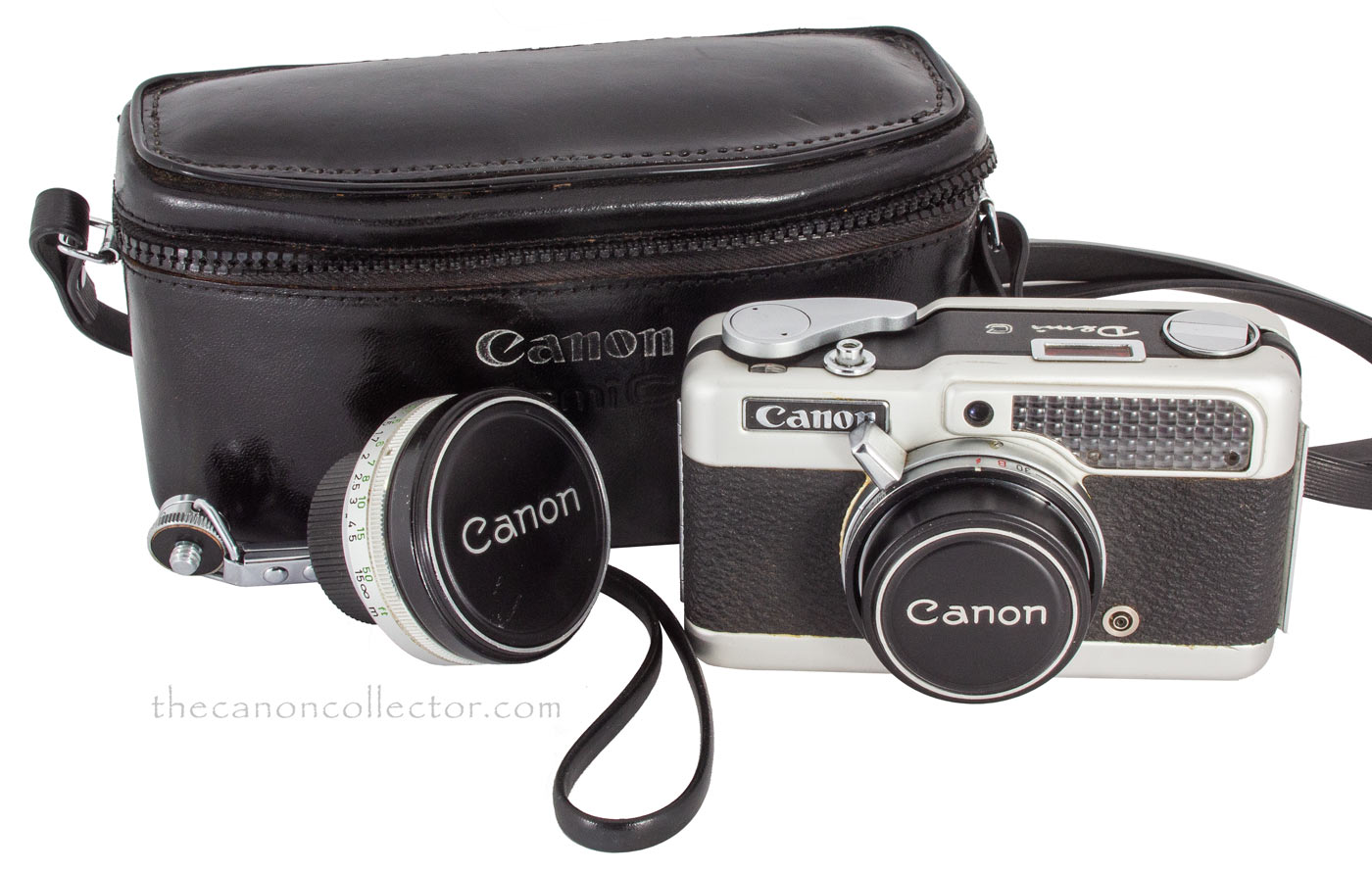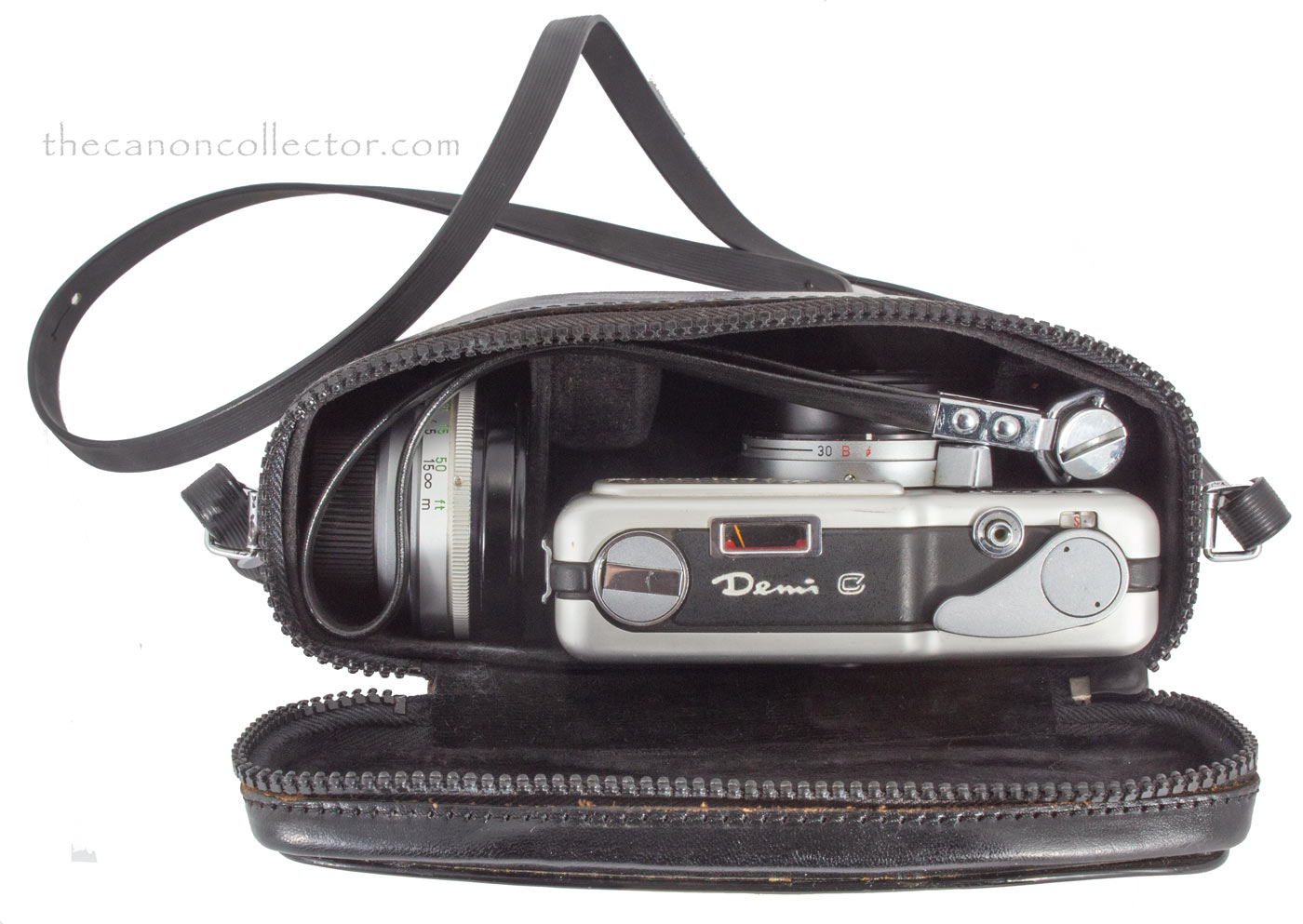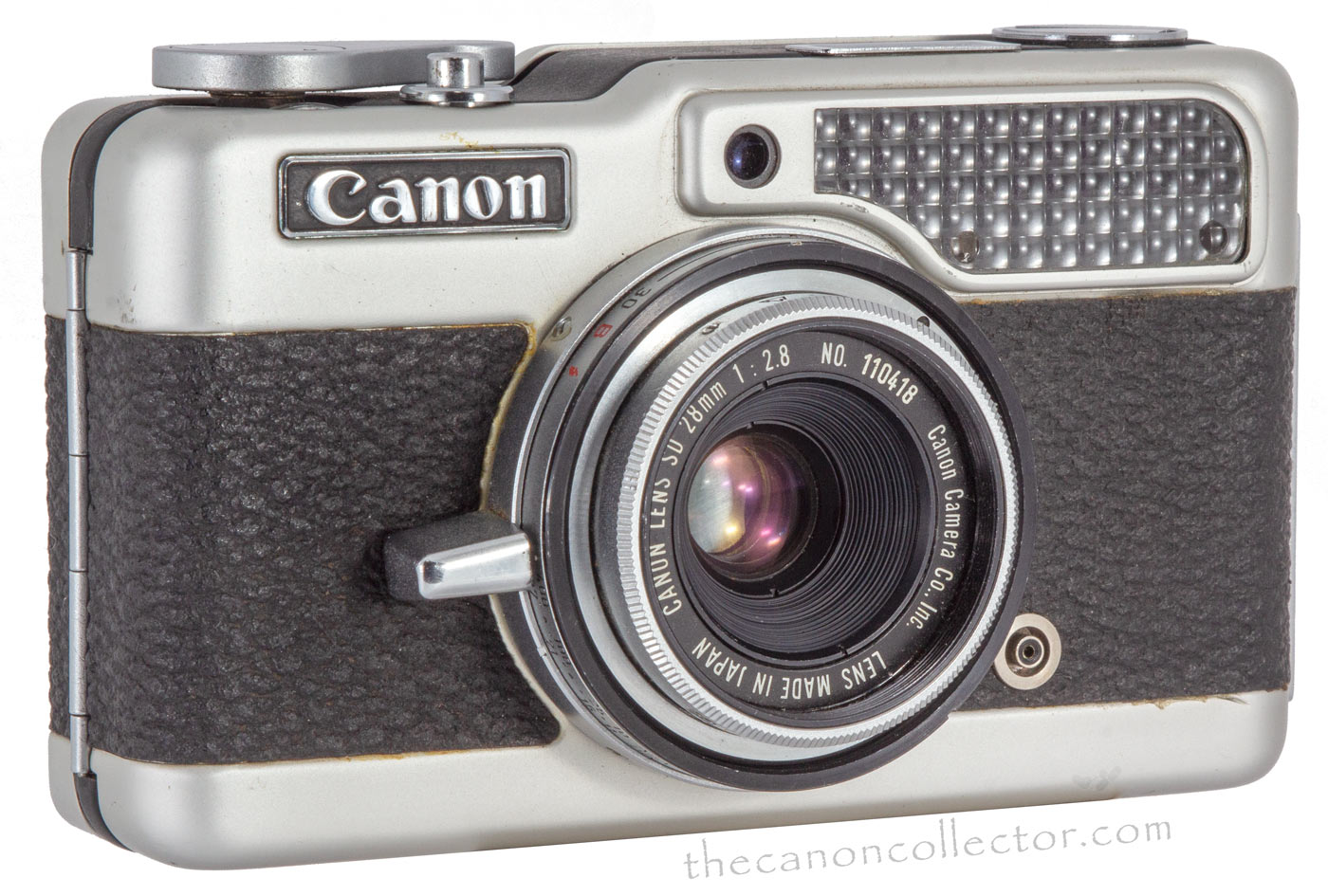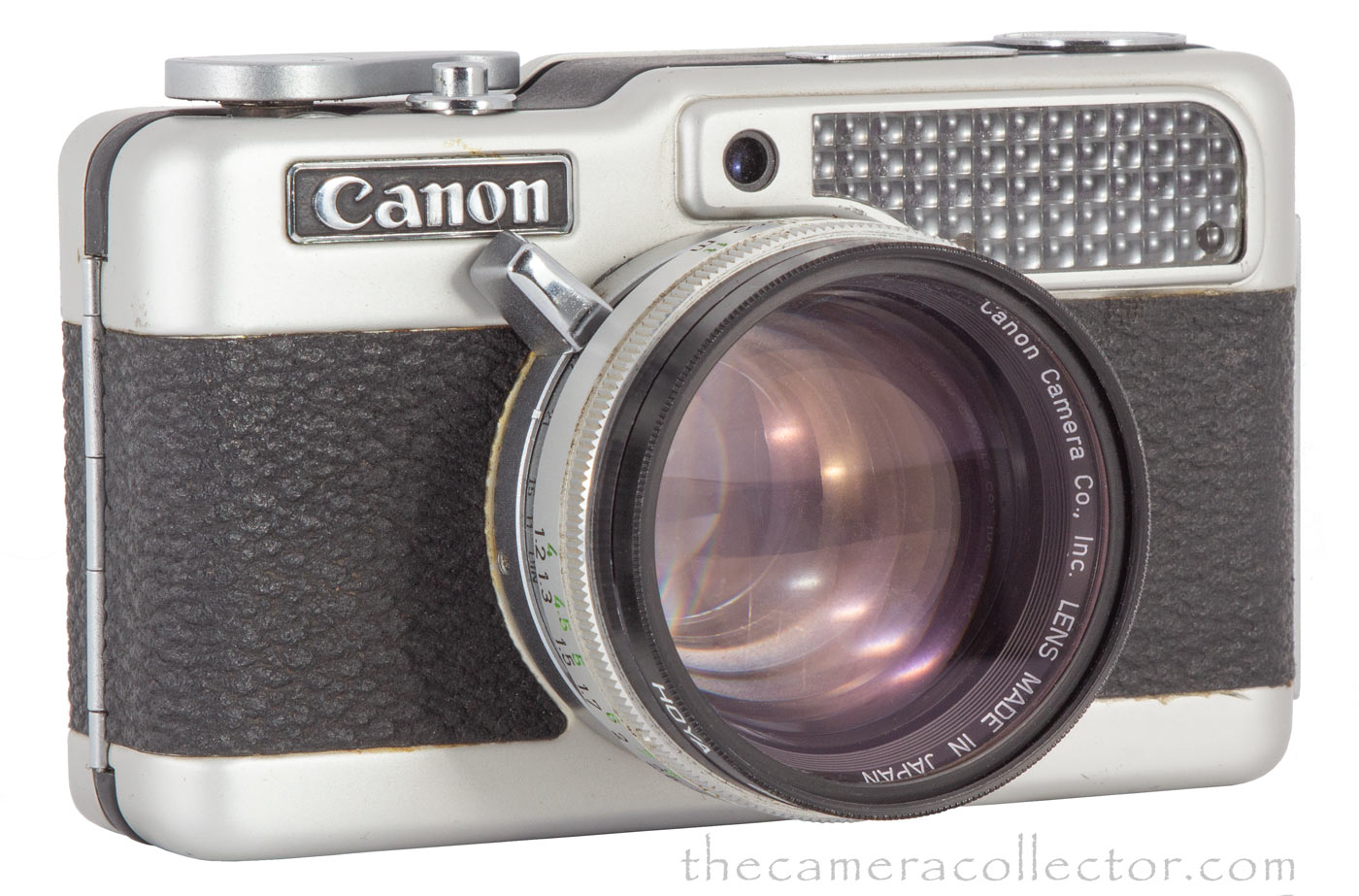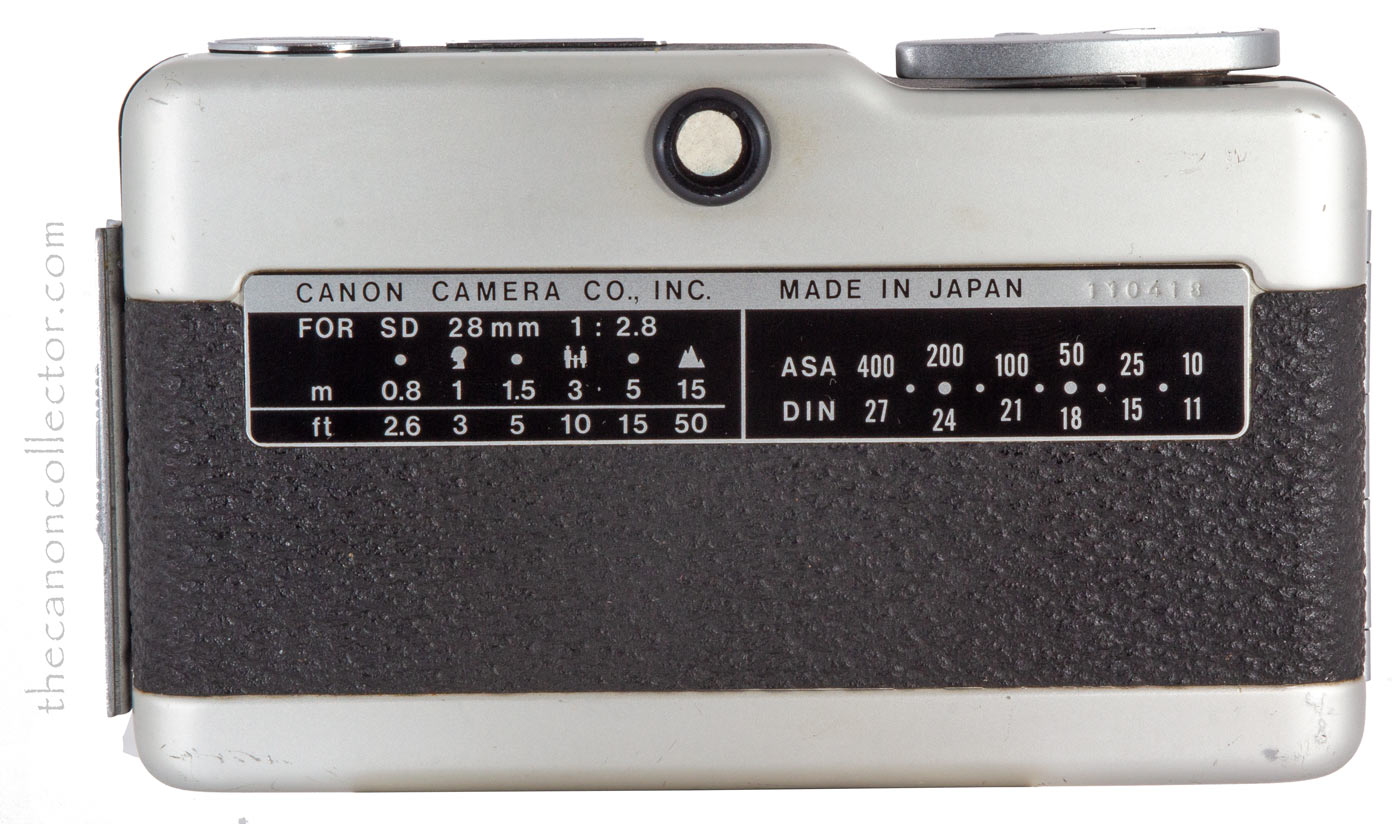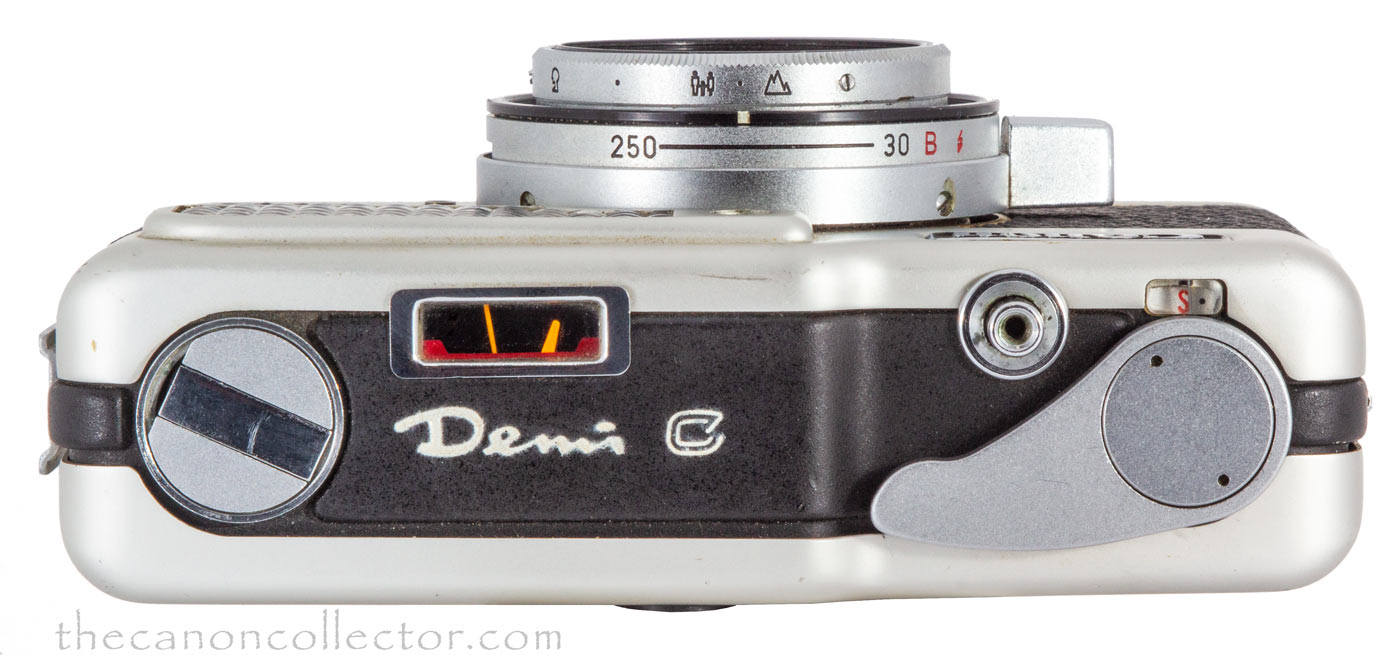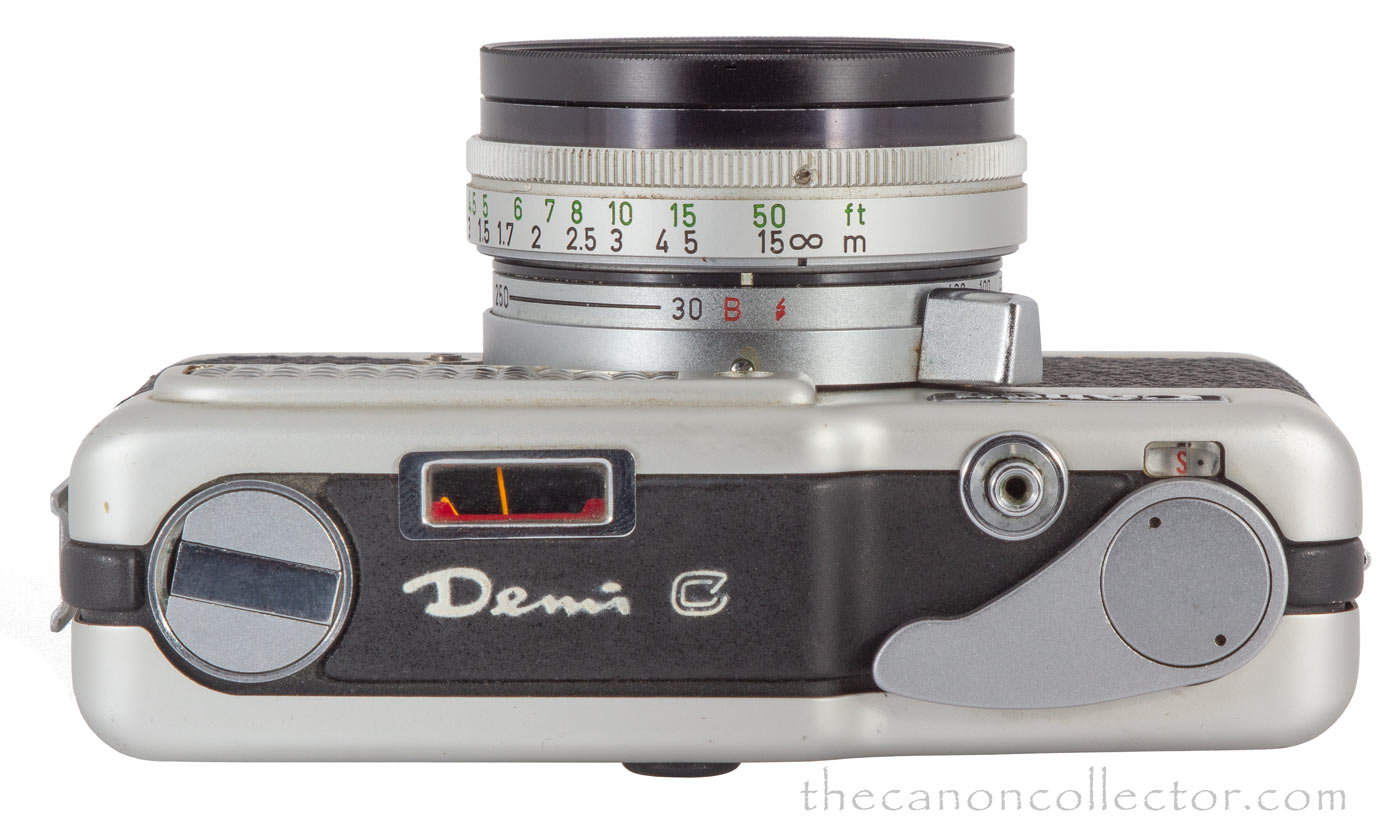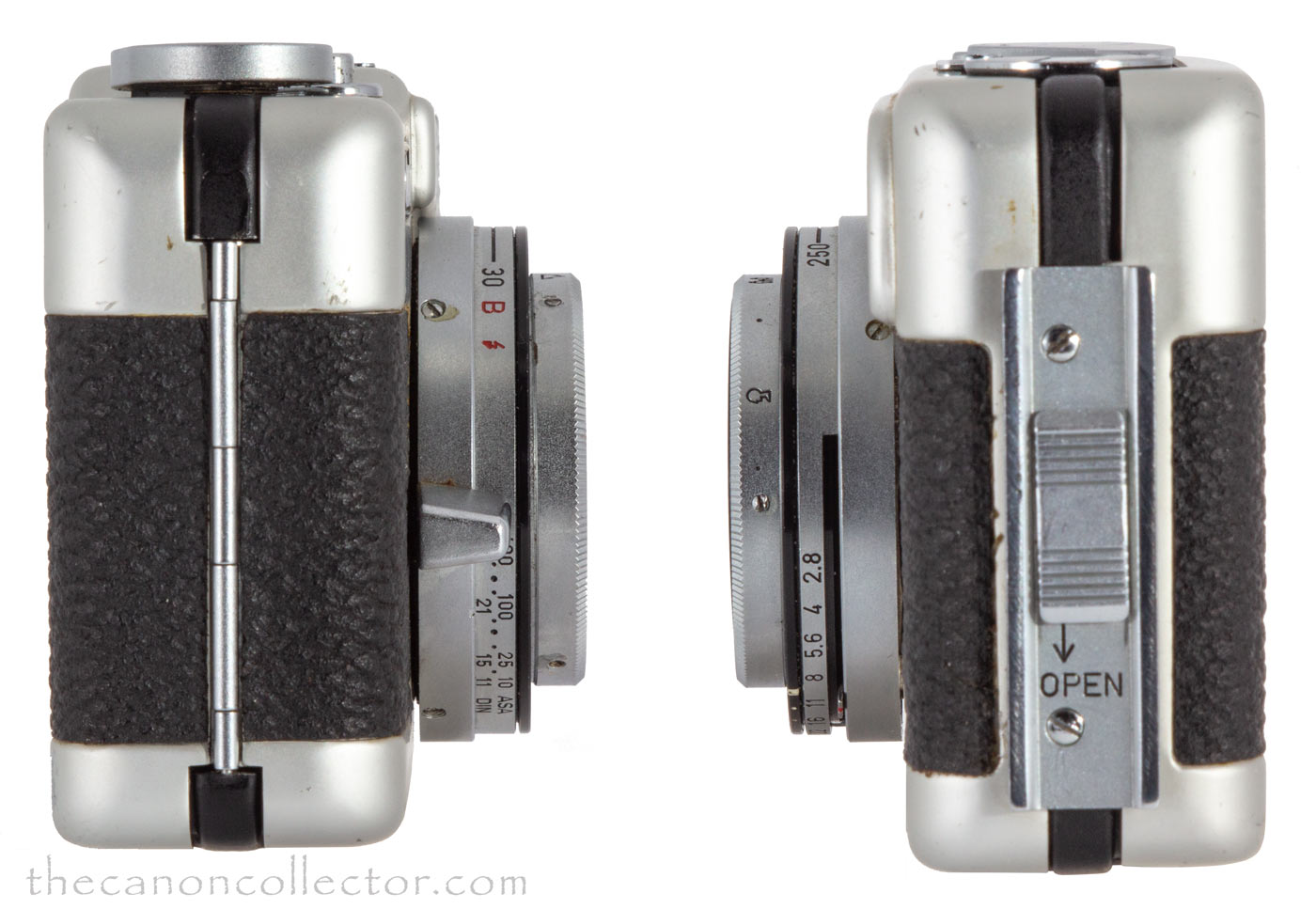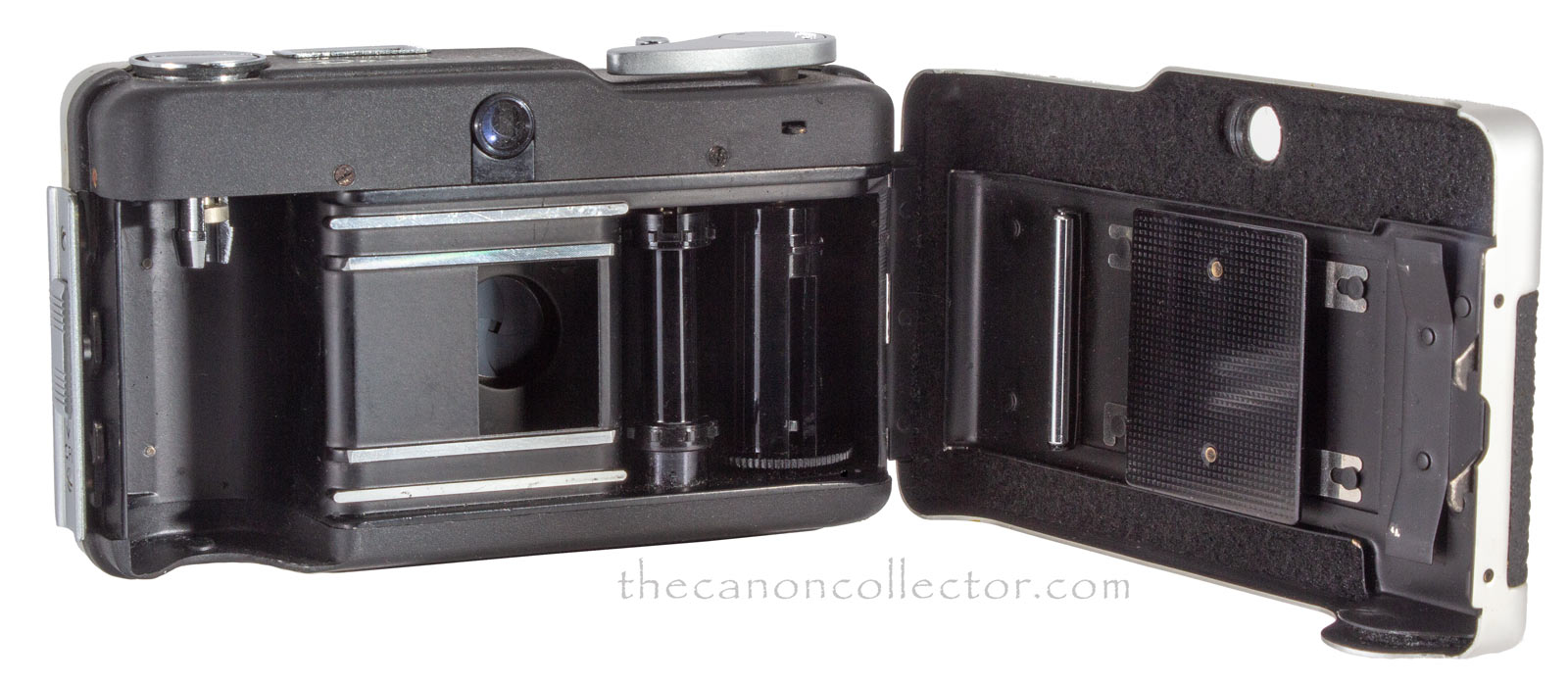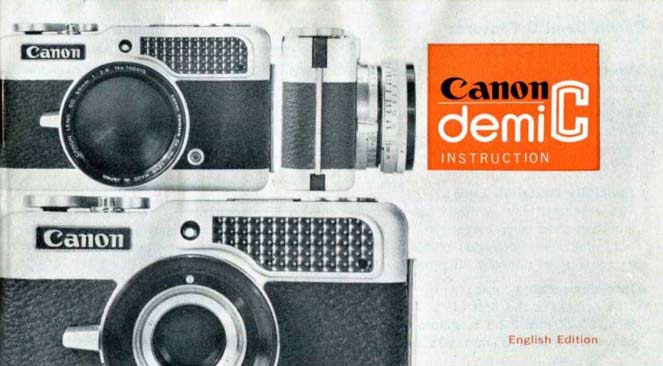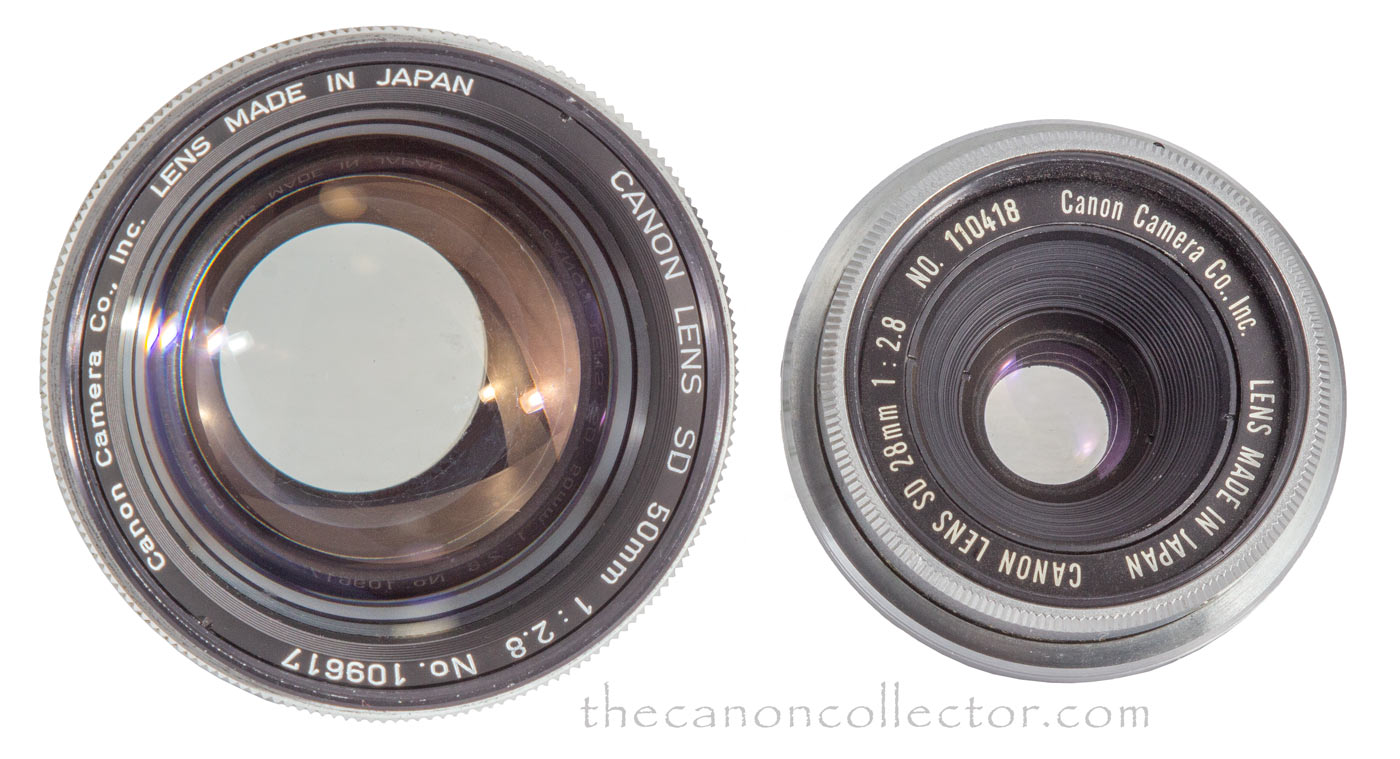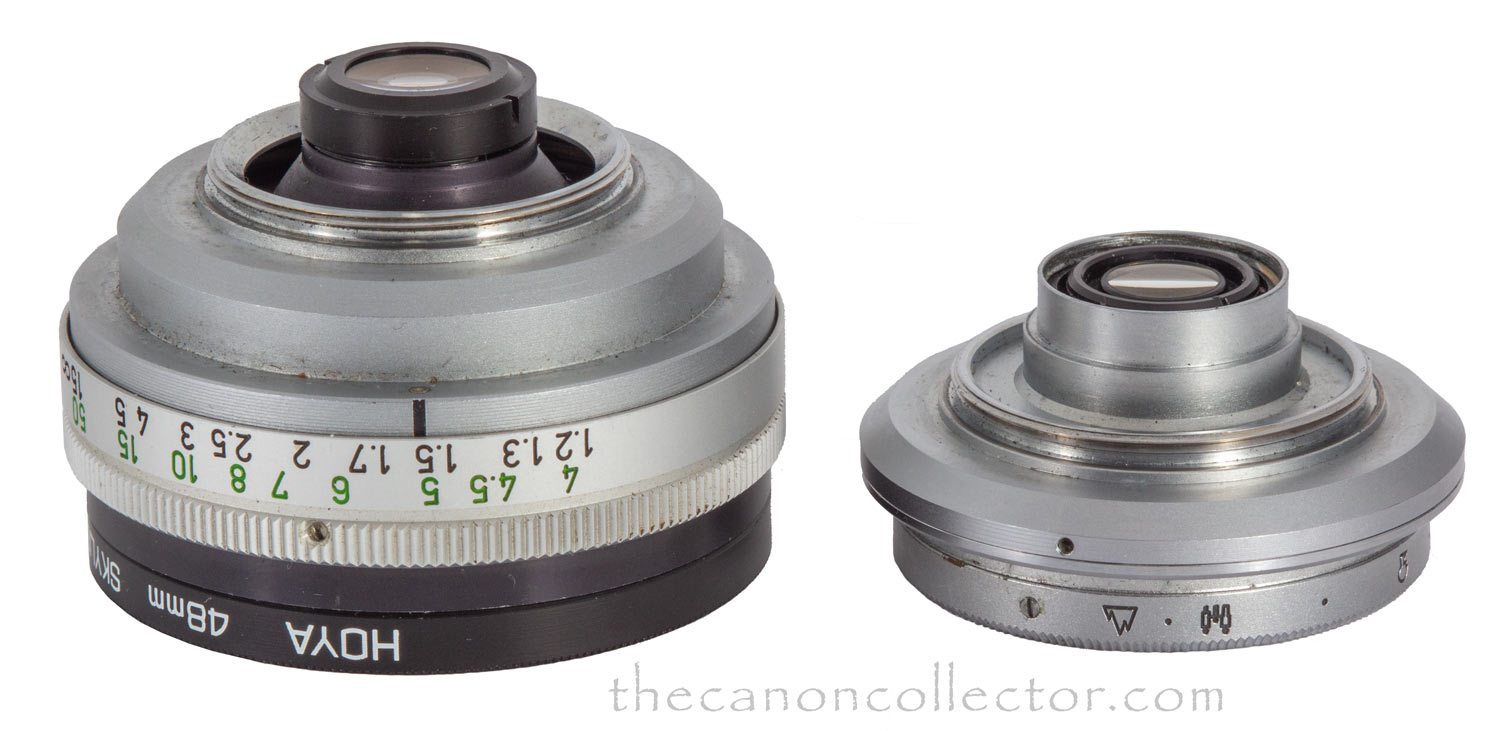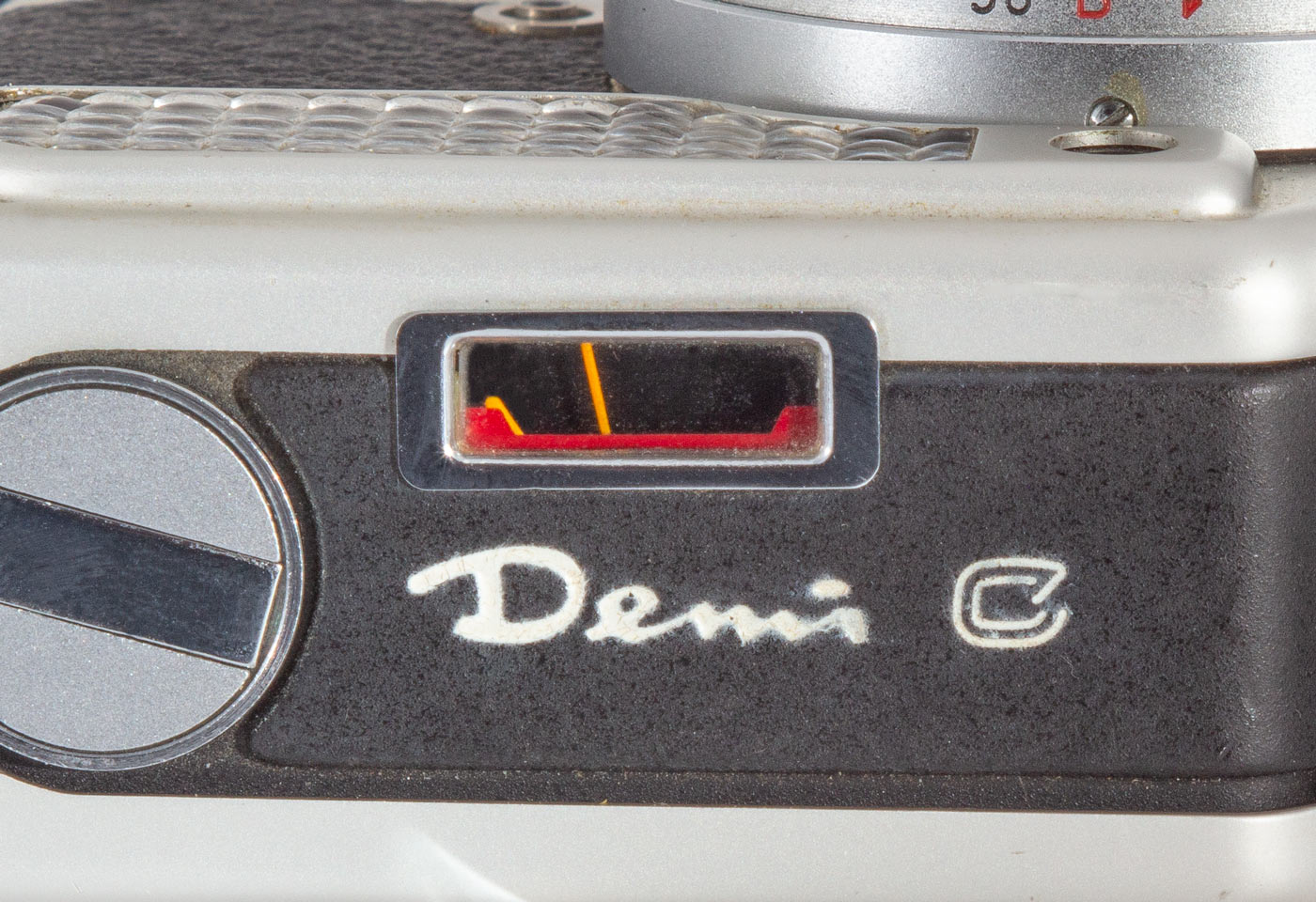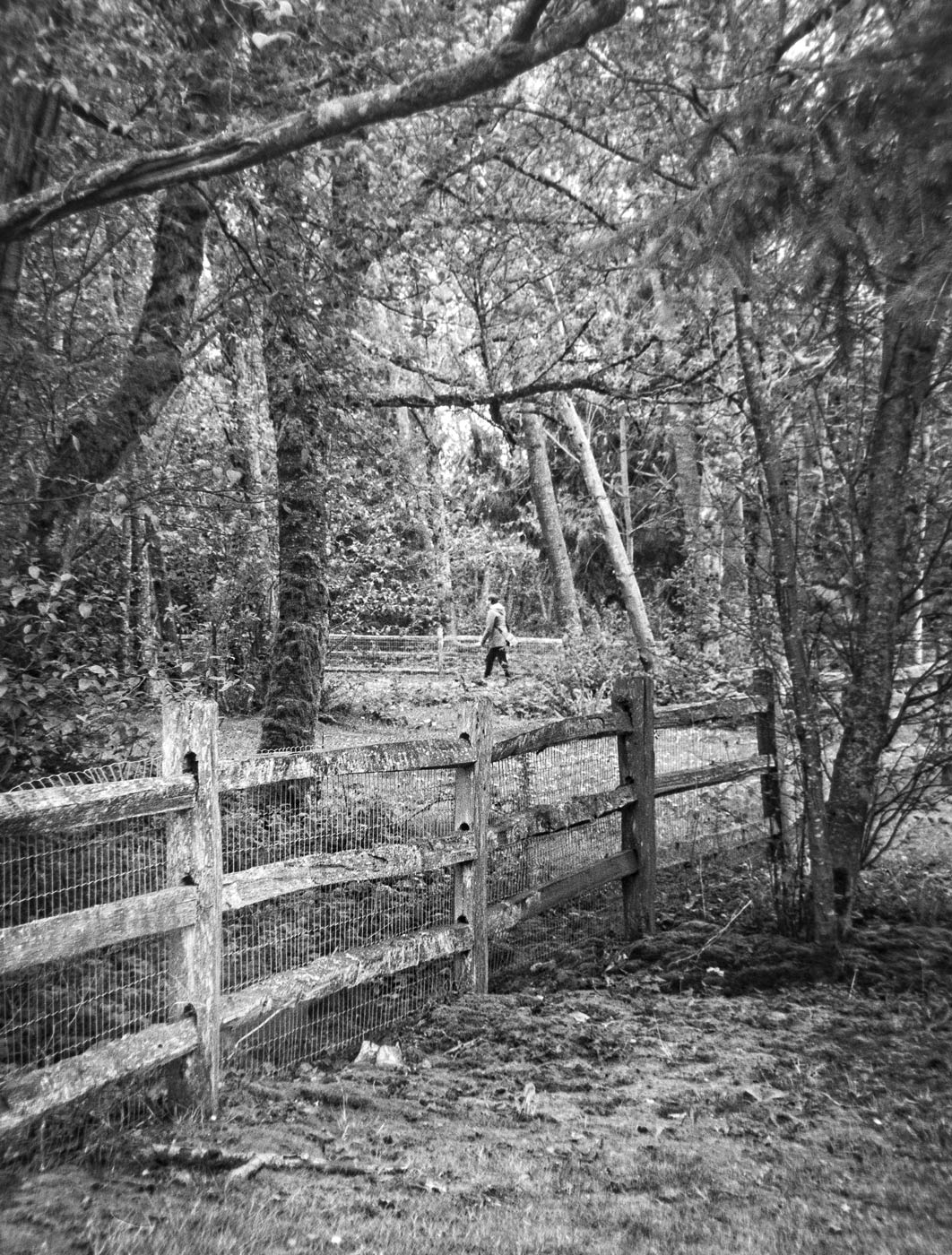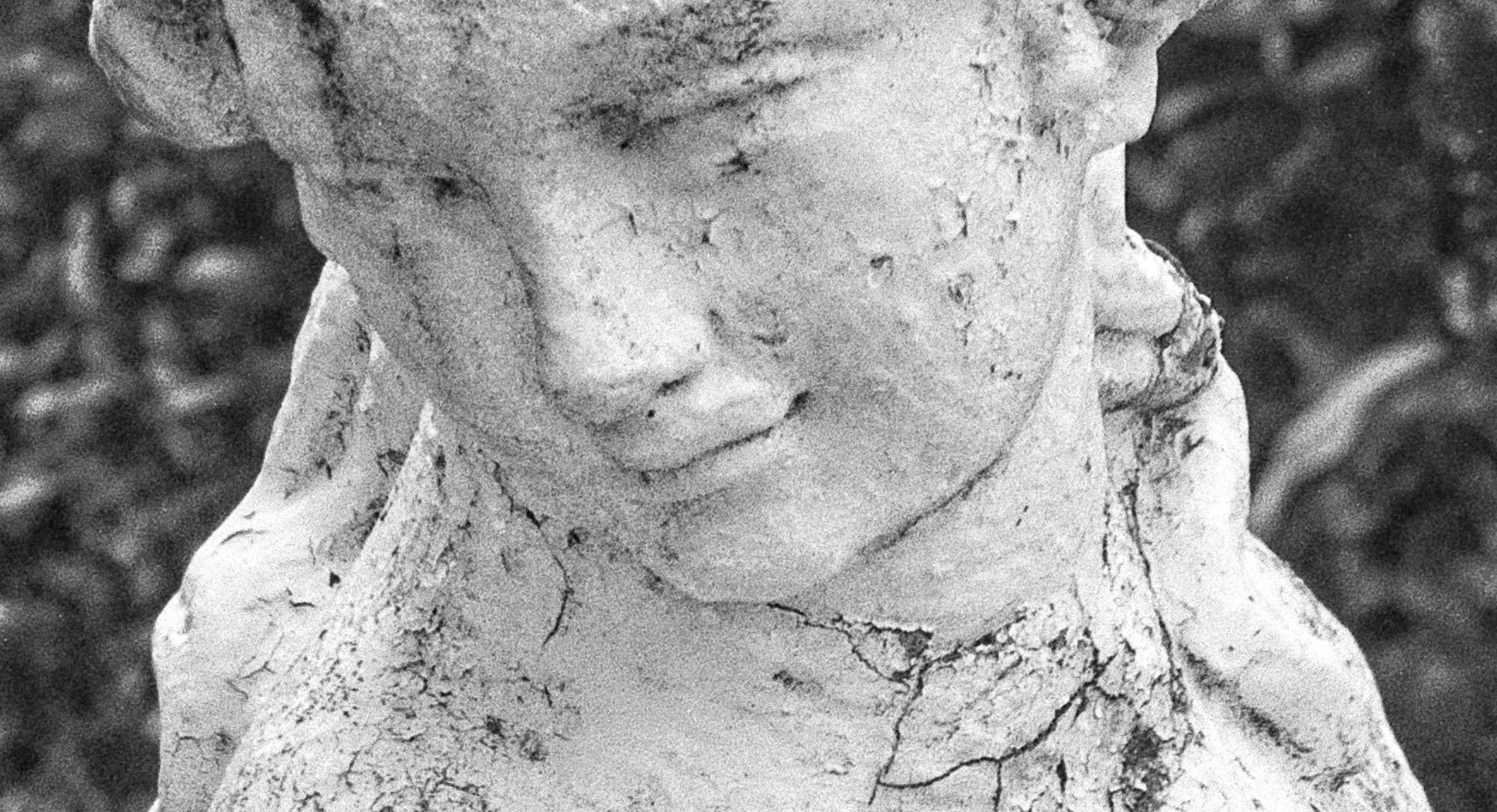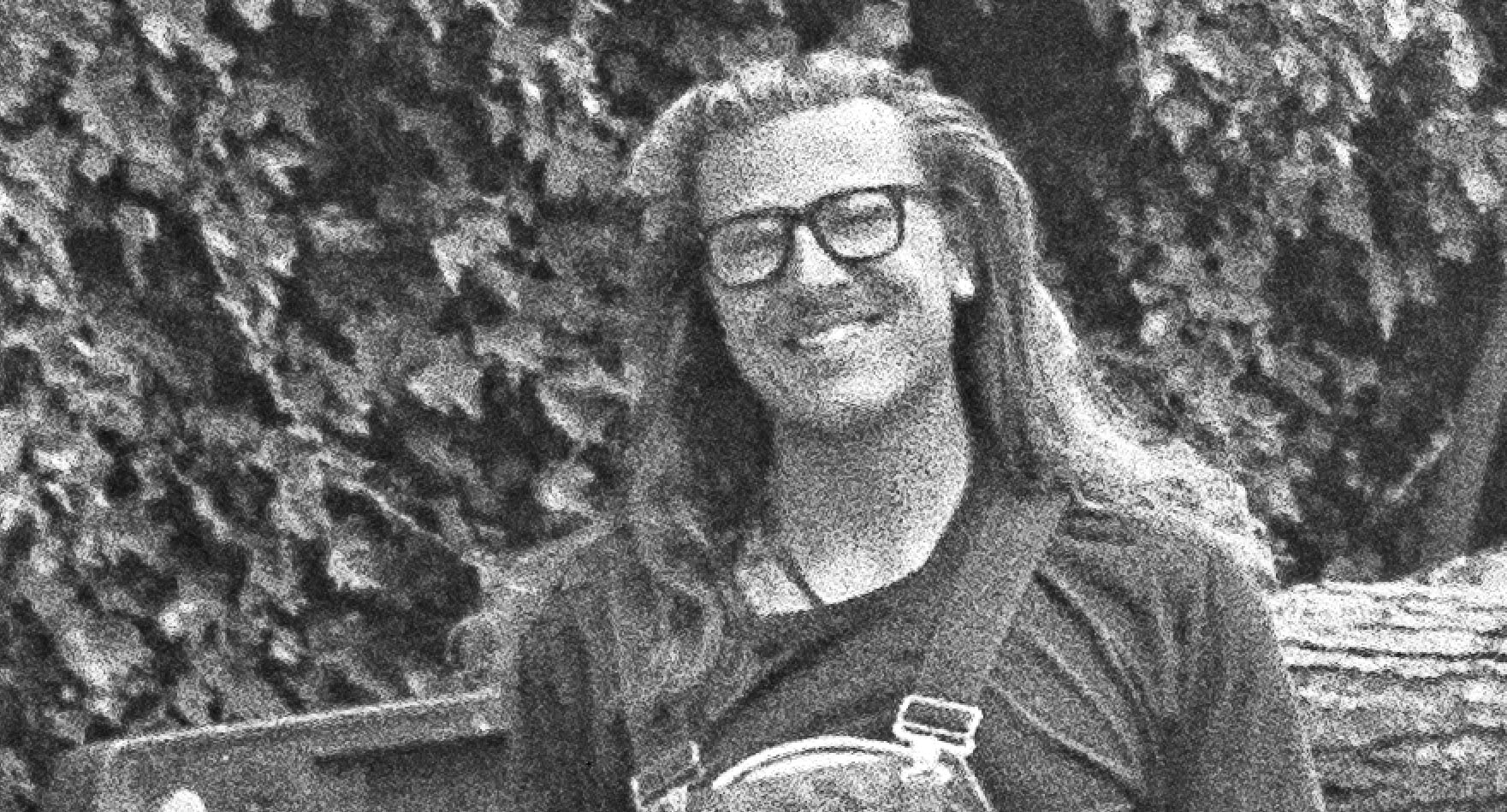The Demi C came in a handsome black leather fitted case with two lenses, camera, lens caps and wrist strap.
The camera and lenses fit snuggly in the leather case but with enough room that the top zippers shut easily.
The Demi C
In 1959 Olympus introduced the first half frame 35mm camera to be built in Japan. It was very successful and Canon realised that there was a market here. So, in February of 1963 they introduced the first Demi camera. This was a half frame 35mm camera with an automatic exposure system that was as advanced as anything available at the time.
Canon introduced various improved models of the Demi and in April of 1965 they introduced the Demi C. This camera was unique in that it was one of only a few half frame cameras with interchangeable lenses.
The viewfinder was very clear with sharply defines edges. This was the view for the 28mm lens. In the field of view there is a smaller rectangular frame corresponding to the field of view of the 50mm lens.
There is no rangefinder in the Demi C. The user must use what is called “zone focusing”. This means that he, or she, must estimate the distance to the subject and then use the scales on the lens to set that distance.
Film loading, advance and rewind work the same as any other of Canon’s film cameras of the day. The film counter is on the top deck and it resets to zero each time the camera back is opened.
The Demi C with the 28mm lens on it looks like all of the Demi’s to this point. The Selenium photo cell is in the large window on the top right. Viewfinder is through the small round lens top center.
With the 28mm lens mounted on the camera it looks like all of the Demi’s that preceded it. Flash sync is via the PC Socket on the front panel.
The layout of the top deck is similar to all 35mm cameras of the day. In the window are the two needles that must be matched for correct exposure.
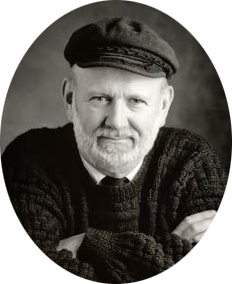
We have a Newsletter
There is a Newsletter for thecanoncollector.com to keep you up to date on what we are posting. Try it!
The back swings open to reveal a very common interior. 35mm casset goes on the left and film winds onto the drum on the right. In the inside of the back you can see the new light seal material I installed.
This is an image of the front of the Demi C without a lens. You can see the threaded silver mounting ring just in front of the shutter blades. The tab on the upper left of the outside ring is not focus but shutter speed and iris control. Focusing is built into the lens itself.
The Demi C, as we said, has interchangeable lenses. Two, to be exact, the SD 28mm f/2.8 and the SD 50mm f/2.8. These are screw mount lenses that fit only this camera.
Because this camera has an image area half that of the normal 35mm frame the lens full frame equivalent focal lengths are about 35mm and 75mm.
To achieve this Canon moved the shutter and the iris further back into the camera body and put a threaded mounting ring in front of them which you can see on the left. In most other respects this Demi is the same as the Demi S.
The Demi C kit came with a nice fitted black leather case that holds the camera body with one lens mounted and the other lens in a separate pocket at the end of the case. Each lens had a front lens cap but there was only one rear cap as one lens was always on the camera.
Both lenses have focusing threads allowing the user to focus the camera. The 50mm lens has actual distances engraved on the lens barrel. To focus the camera one estimated the distance and set that estimate on the engraved scale. The 28mm lens had symbols for “Portraits”, “Groups”, and “Landscapes” engraved on the barrel and on the back of the camera was a table that gave distances for theses symbols and the spaces between.
Check out the instructions in the Manual which I have posted above to get Canon’s explaination of this. They do it better than I and with pictures!
There are just two SD lenses, the 28mm and the 50mm. They are both f/2.8. They have no aperture in them but they do have a focusing helix. Being the same aperture greatly simplifies the light measurement circuitry.
Shooting with the Demi-C
The problem shooting with the Demi camera is that very few of their selenium cells are still working. As I will explain below, shooting this camera manually is difficult and not for the feint of heart. So, as a result, I have not had a chance to shoot with one of my Demi cameras. Not being able to take one out in the field I did not really understand the exposure system.
And then my Demi-C arrived and all of that changed. The meter appeared to work. The light seals were shot, as they all are on these cameras. So first I replaced the light seal material with new foam which seems more durable than the original. Then I loaded a 24 exposure roll … well actually that is a 48 exposure roll … and went for a walk.
So, let’s talk about exposure. You first have to set the correct ASA on the camera. That is easy and you can read about it in the Manual above.
The large tab on the front of the camera rotates a ring that sets both shutter speed and aperture at the same time. They are linked. At one end of the rotation the camera is set at f/22 at 1/250th and at the other it is set at 1/30th at f/2.8. But they change together. You cannot set them individually. The position of this ring is connected to the wide needle in the window on top of the camera. This window has a narrow needle which is the light meter needle driven by the photo cell. When the two needles are aligned the lens should admit the correct amount of light.
Unfortunately we are having a rather dull wet spring here in Vancouver this year and so I ended up with film in my camera on a very grey day. But we are not making art here. We are just looking at lens performance so flat images will work just fine.
When I processed my roll of film I was immediately struck by the negatives: all well exposed and of equal density. The exposure system on the camera actually worked very well even after 50 plus years. I was surprised.
I scanned them all with my flat bed scanner and from those images I chose the ones that you see here and rescanned them with my Canon R as I usually do.
On the left is an image taken with the 50mm lens. It is the whole image area. I estimated the distance to the second fence post, the one under the figure in the distance, and set that distance on the scale. It appears that I was actually focused just a little ahead of it. You can tell by looking at the wire in the fence. It is sharpest just to the left of that fence post.
The statue below and left is the whole image from a frame again taken with the 50mm lens. Beside, directly below, it is a portion of the same image at 100% as Photoshop determines it. The focus arrangement is a little hit and miss but you can see that the 50mm lens is really pretty good.
Below is a photo taken with the 28mm lens. This lens is harder to use because of the approximate focusing. The lens is wide and so focus is not as critical but still I found it awkward. There are only symbols on the lens but there is a table on the back of the camera that translates the symbols into feet.
The picture below on the left is the full frame image of my grandson Nico cutting some firewood for us. On the right is the center of the image at 300 per cent. You can see the image is showing the film grain but the edges are still reasonably sharp. Obviously this lens too is capable of good images
Shooting in Manual Mode
Before we wrap up, lets talk about shooting in manual mode. The camera is not really designed for that but it can be done, sort of. If you set the shutter speed ring to “flash” the shutter speed is set to 1/30th. But then you can set the aperture with the little tab on the bottom of the lens. You are stuck with 1/30th but you can set aperture to anything from f/2.8 to f/22. So you will have to use slow film, or, figure out how to use neutral density filters on this camera.
So, yes, you can shoot in manual mode but it is less than satisfactory.
And in Conclusion
So, what conclusions have I reached? Well, the exposure control on the camera seems to be excellent. The lenses are adequate for the camera although focusing is frustrating for someone used to rangefinders or SLR’s. But, if you can get past that weakness, this is a good little camera.
Now I have to say that I have a problem with all of the Demi cameras: if you compare them with a Canon III or any of the other “Barnack” cameras, they are about the same size. They may not be as long but they are thicker so in size they are equivalent to my eye. And the Canon III is so much more capable.
This website is the work of R. Flynn Marr who is solely responsible for its contents which are subject to his claim of copyright. User Manuals, Brochures and Advertising Materials of Canon and other manufacturers available on this site are subject to the copyright claims and are the property of Canon and other manufacturers and they are offered here for personal use only.

